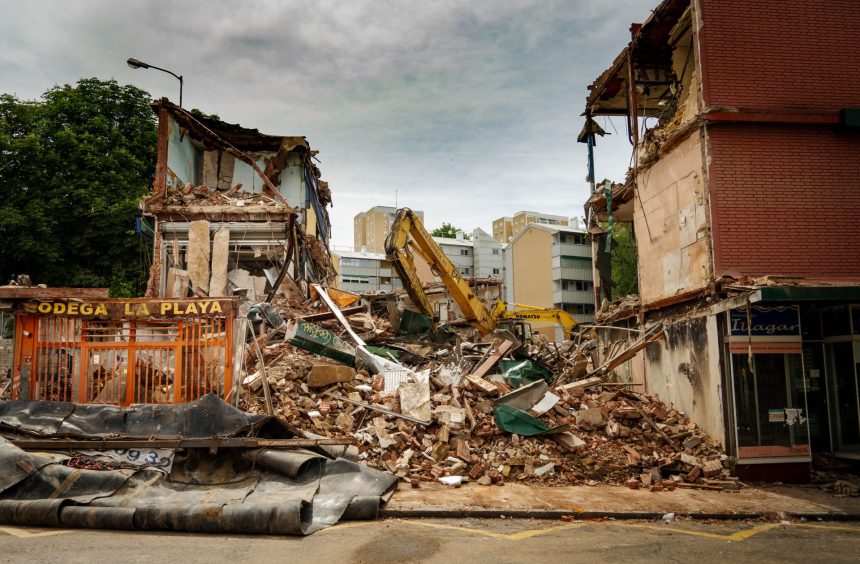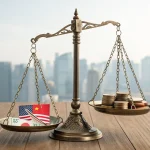On January 1, a powerful earthquake hit central Japan, killing thousands of people and causing extensive damage. Thousands of residents were forced to evacuate their homes. Preliminary earthquake data puts the magnitude at 7.6, which led to widespread destruction of structures, the loss of electricity to thousands of homes, and the activation of tsunami alerts in South Korea and Japan. The earthquake, its effects on the impacted regions, and the continuing rescue and recovery operations are summarized in this article.
Tsunami and Earthquake
The 7.6-magnitude earthquake hit central Japan, making it the strongest earthquake to hit the area in more than 40 years. A major tsunami warning was downgraded to an advisory for Ishikawa prefecture by the Japan Meteorological Agency (JMA). Approximately one meter waves were seen along the west coast of Japan and neighboring South Korea.
Houses crumbled, fires broke out, and roads were severely damaged as a result of the tremors. There was horrifying footage captured by local media as buildings collapsed, roads cracked, and people were pushed to seek refuge on higher ground. In Shika Town, Ishikawa, a building collapsed, tragically killing one person.
Help in the Search and Rescue Mission
As soon as the earthquake hit, the Japanese government sent rescue and recovery teams to help those in need. Support from the Army was sent out, and rescue efforts were launched to find and aid the victims. Unfortunately, the earthquake-damaged roads made it difficult to reach the impacted areas.
More than 97,000 individuals in nine prefectures on the western coast of Honshu, the main island of Japan, were given evacuation orders. Because of their frequent usage as evacuation centers in times of crisis, these locals sought refuge in school gymnasiums and sports halls. In her account of her family’s evacuation to an adjacent elementary school, Kanazawa resident Ayako Daikai described the overcrowding they encountered in the classrooms, stairwells, hallways, and gymnasium.
Nuclear Power Plant Effects
The nuclear industry in Japan has been under fire since the 2011 Fukushima nuclear meltdowns, so the timing of the earthquake couldn’t have been worse. There were no reported issues at any of the nuclear power plants along the Japan Sea, including the Ohi and Takahama facilities in Fukui Prefecture run by Kansai Electric Power. Even though it was the nuclear power station nearest to the epicenter, Hokuriku’s Shika plant in Ishikawa was unaffected because it had already shut down its two reactors for routine inspections before the earthquake.
Evacuations and Tsunami Warnings
Televisions across the country flashed a bright yellow message in the aftermath of the earthquake, warning people in certain coastal areas to leave their homes immediately in case of a tsunami. Victims in at-risk areas were the intended recipients of this urgent alert. Officials in Japan issued an evacuation order, and thousands of people were given temporary shelter in specially designated centers.
Effects on Mobility and Buildings
Important infrastructure was damaged or disrupted by the earthquake, which also affected transportation systems. Around 1,400 people were left stranded when four bullet train services between Kanazawa and Toyama were stopped, according to West Japan Railway. Another airport in Ishikawa had to close its doors because the runway had cracked. Authorities are making every effort to evaluate the damage, fix it, and get the impacted areas back to normal.
Persistent Earthquakes
There has been a buildup of seismic activity in the area for more than three years, which has prompted fears of more powerful earthquakes in the near future. Additional earthquakes may occur in the region, according to Toshihiro Shimoyama, an official from the Japan Meteorological Agency. Officials and citizens alike must keep their vigilance and readiness for additional seismic activity at all times.
See first source: CNBC
FAQ
What was the magnitude of the earthquake that hit central Japan?
The earthquake had a magnitude of 7.6, making it the strongest earthquake to hit the area in over 40 years.
What were the immediate effects of the earthquake on the impacted regions?
The earthquake led to widespread destruction of structures, fires, and severe damage to roads. Buildings collapsed, roads cracked, and there were reports of casualties and injuries.
Was there a tsunami warning associated with the earthquake?
Yes, there was a major tsunami warning initially, but it was downgraded to an advisory for Ishikawa prefecture by the Japan Meteorological Agency (JMA). Approximately one-meter waves were observed along the west coast of Japan and South Korea.
How did the Japanese government respond to the earthquake?
The Japanese government immediately sent rescue and recovery teams, including support from the Army, to help those in need. However, damaged roads made it challenging to reach the impacted areas.
Were there evacuations in response to the earthquake?
Yes, more than 97,000 individuals in nine prefectures on the western coast of Honshu were given evacuation orders. Many sought refuge in school gymnasiums and sports halls.
What was the impact on nuclear power plants in the region?
There were no reported issues at nuclear power plants along the Japan Sea, including the Ohi and Takahama facilities in Fukui Prefecture. The Shika plant in Ishikawa, closest to the epicenter, was unaffected as it had shut down its reactors for routine inspections before the earthquake.
How did the earthquake affect transportation and infrastructure in the impacted areas?
The earthquake damaged important infrastructure and disrupted transportation systems. Bullet train services between Kanazawa and Toyama were stopped, leaving around 1,400 people stranded. An airport in Ishikawa had to close due to runway damage.
Is there a risk of more earthquakes in the region?
Yes, there has been a buildup of seismic activity in the area for more than three years, raising concerns about the possibility of more powerful earthquakes in the future. Officials and citizens are advised to remain vigilant and prepared for additional seismic activity.
Featured Image Credit: Photo by Jose Antonio Gallego Vázquez; Unsplash – Thank you!







